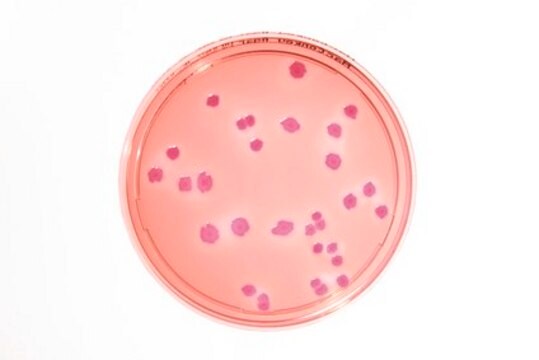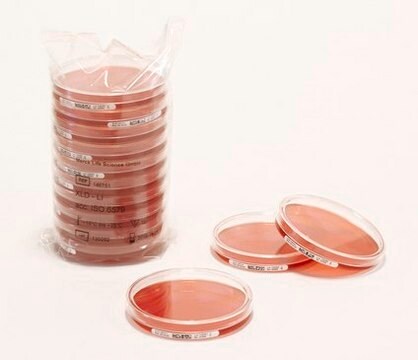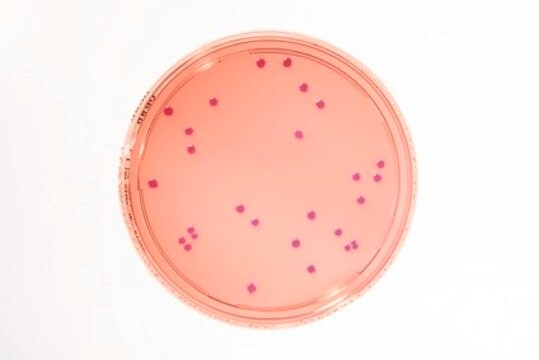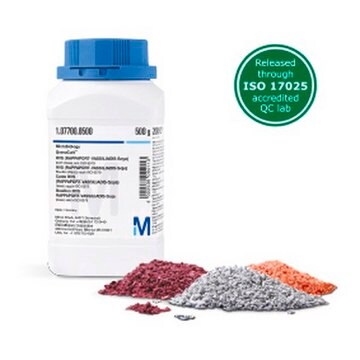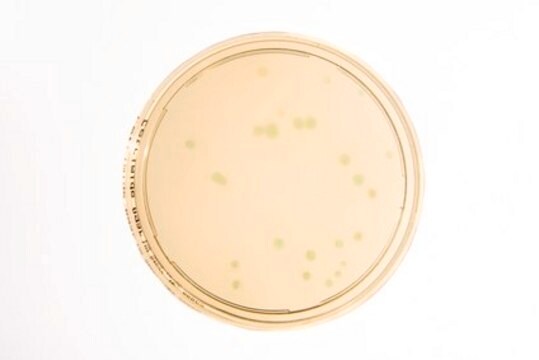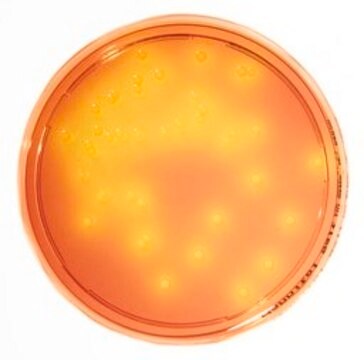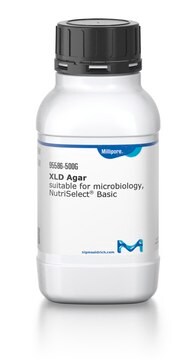1.46073
HEIMPLATE XLD Agar - LI EP+USP 30ml
Selective media for the isolation of Salmonella and Shigella in pharmaceuticals and clinical materials
Synonyme(s) :
Xylose Lysine Deoxycholate Agar
Se connecterpour consulter vos tarifs contractuels et ceux de votre entreprise/organisme
About This Item
Code UNSPSC :
41106217
Nomenclature NACRES :
NA.74
Produits recommandés
Agence
EP 2.6.12
USP 61
Niveau de qualité
Stérilité
sterile
Forme
solid
Caractéristiques
ready-to-use
Technique(s)
microbiological culture: suitable
pH
7.4 ( in H2O)
Application(s)
microbiology
pharmaceutical
Température de stockage
20-25°C
Adéquation
Salmonella spp. (spp.)
Description générale
Xylose Lysine Deoxycholate agar (XLD agar) is a selective growth medium introduced by Taylor (1965) for the isolation of Salmonella and Shigella species (Taylor and schelbert, 1971). It relies on the use of selective inhibitory component sodium deoxycholate and three indicator systems, i.e. xylose, lactose and sucrose combined with phenol red. Degradation of xylose, lactose, and sucrose to acid causes phenol red to change its colour to yellow. Sodium thiosulfate and iron (III) salt react to form a precipitate of black iron sulfide in the colonies, indicating the production of hydrogen sulfide. Bacteria which decarboxylate lysine to cadaverine can be recognized by the appearance of a purple coloration around the colonies due to an increase in pH. These reactions can proceed simultaneously or successively. This causes the pH indicator to exhibit various shades of colour, or it may change its colour from yellow to red on prolonged incubation. The culture medium is weakly inhibitory to other microbes due to the presence of sodium deoxycholate.
Application
Xylose Lysine Deoxycholate (XLD) Agar - LI is a selective culture medium for isolation of Salmonella and Shigella in pharmaceuticals.
Conditionnement
90 mm settle plates with 30 ml filling volume (20 or 120 plates per box) for long incubation (LI)
Code de la classe de stockage
13 - Non Combustible Solids
Classe de danger pour l'eau (WGK)
WGK 2
Certificats d'analyse (COA)
Recherchez un Certificats d'analyse (COA) en saisissant le numéro de lot du produit. Les numéros de lot figurent sur l'étiquette du produit après les mots "Lot" ou "Batch".
Déjà en possession de ce produit ?
Retrouvez la documentation relative aux produits que vous avez récemment achetés dans la Bibliothèque de documents.
Handbook of culture media for food and water microbiology
Curtis, GDW and Baird, Rosamund M and Corry, Janet EL et al.
Royal Society of Chemistry (2011)
Notre équipe de scientifiques dispose d'une expérience dans tous les secteurs de la recherche, notamment en sciences de la vie, science des matériaux, synthèse chimique, chromatographie, analyse et dans de nombreux autres domaines..
Contacter notre Service technique